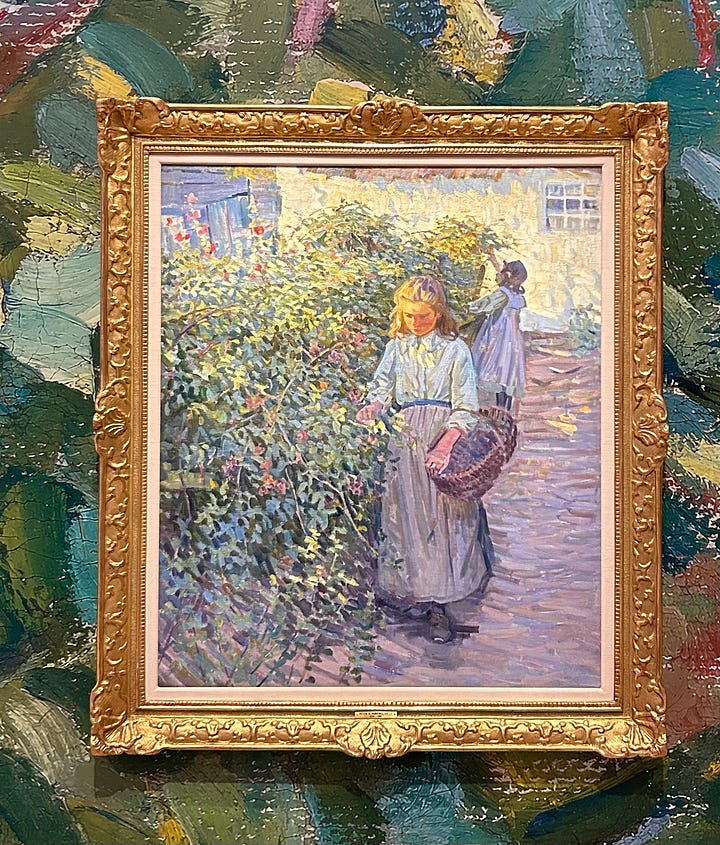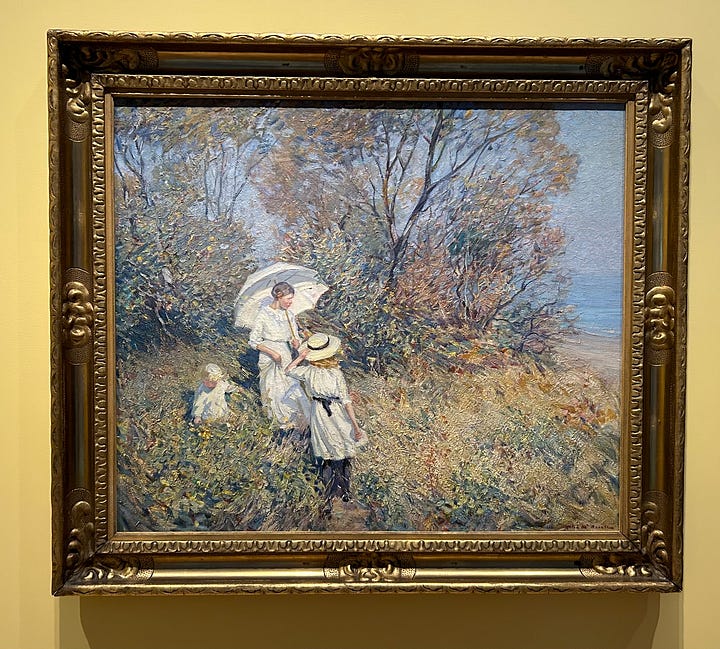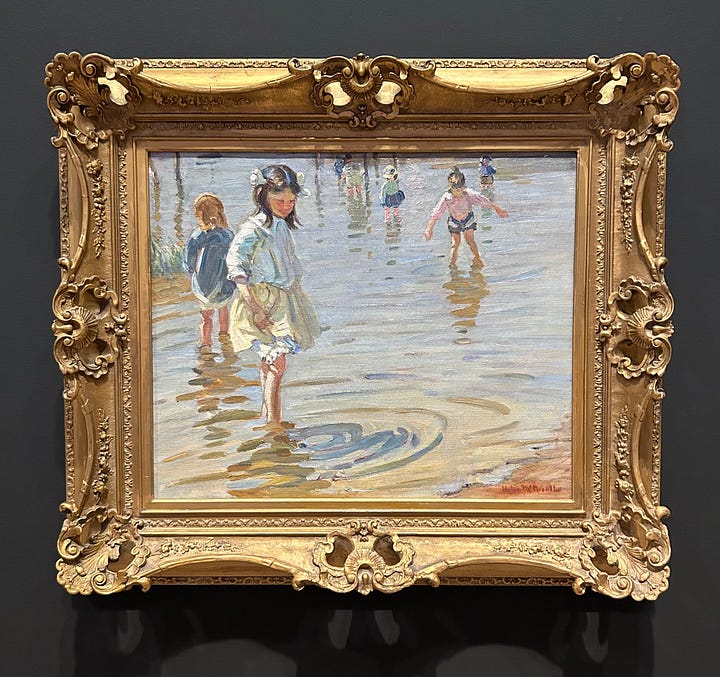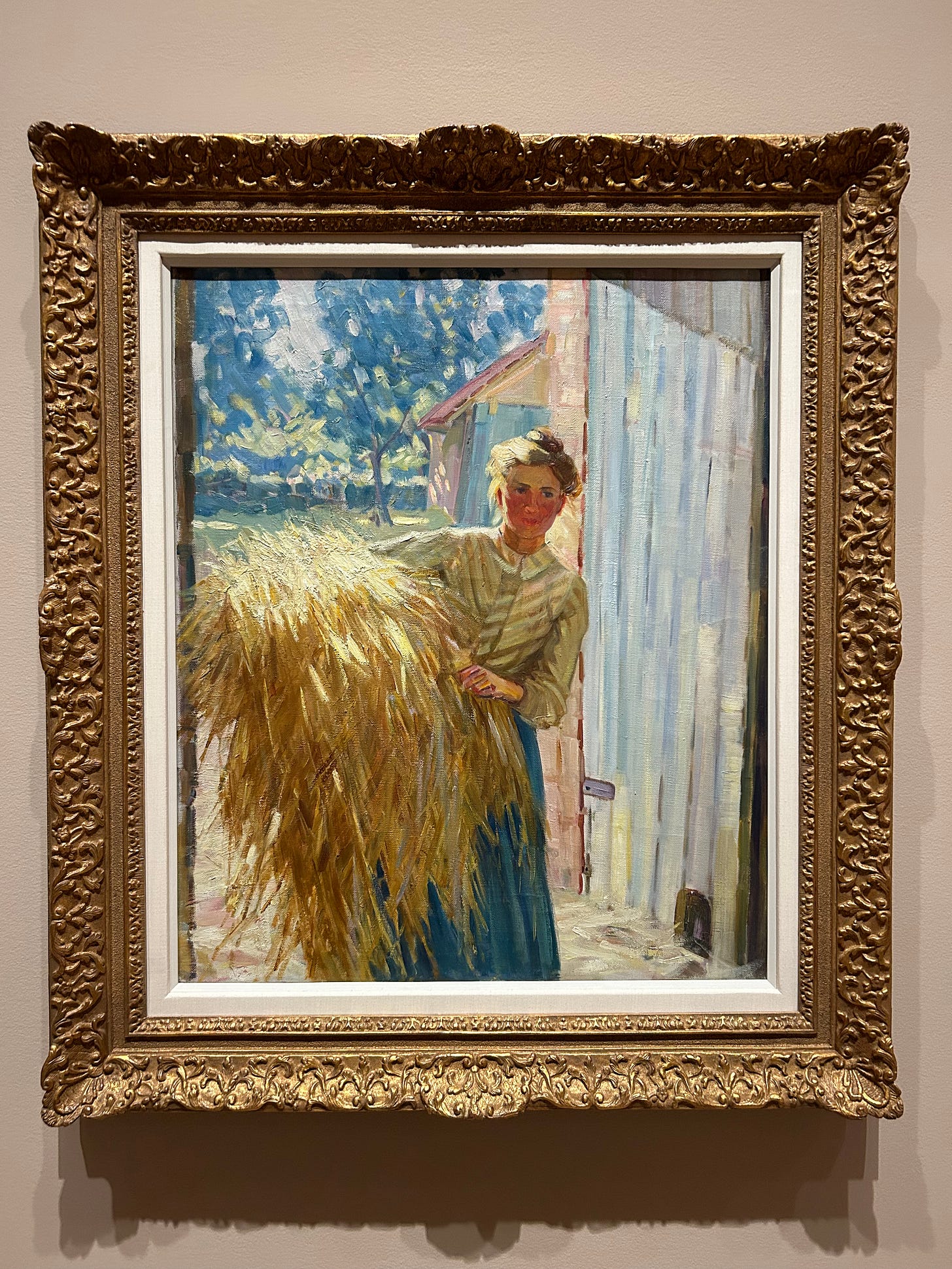When I walk into a gallery, I almost automatically “hear” the sounds in the paintings displayed. But on my recent visit to the Art Museum in Quebec, the power of the paintings especially hit me when I realized that the beautiful scenes were not meant to have sound.
While on a visit to Quebec City last week, I went to an exhibition of an artist I had never heard of before, a turn-of-the-century, impressionistic painter named Helen McNicoll (1879 - 1915). As usual for me, I went straight to the art without looking at the exhibition text or artist information.


What I found were landscapes filled with dappled sunlight; with young women working or resting in summer fields, gardens, and forests—young women with quiet, self-possessed expressions. They seemed to have a lot on their minds there in the sunny scenes.
As I made my way through the beautifully sunny landscape paintings, I came to a gallery of paintings featuring beach scenes. As I was glancing around, I suddenly realized that there were sounds, beach sounds, around me—waves crashing, seagulls squawking, children playing. The sounds that I’d usually hear in my imagination while looking at these beach scenes was playing on speakers around me. I loved the opportunity to immerse myself more into the scenes, and I appreciated the curatorial decision to add sound in the gallery.


After going through the entire exhibition and “reading” a couple of my favorite paintings, I went back to the beginning and read the exhibition text, including Helen’s biography. I learned that she was born in Canada and traveled frequently to England, and that she had sadly died when she was only thirty-six of some kidney ailment. And I read that she was deaf ever since she had gotten scarlet fever as a baby. It seemed like she had had a pretty rough life health-wise. I reflected on the difficulty of being deaf, but I was glad that she seemed to find such joy in her sight—in her adoration for the beauty of sunlight. However, the full significance of her deafness would only hit after I made my way back into the exhibition.
Casually walking through, I found myself back in the gallery of the beach scenes… and sounds. I decided to take a video to capture the cool effect of the beach sounds with the paintings. And then it dawned on me—the sad irony dawned on me. She would not have been able to hear these sounds. She would not even be able to imagine those sounds. While I felt more immersed in her beach scenes because of the sounds, to her the waves would be silent, the birds would be silent, and there would be no sound of children playing.
With any art experience, I try to bring to bring it more fully to life by imagining the effect of a scene on my non-sight senses: the warmth of the sun, the salty smell of the sea, the breaze on my face, and the sounds of children splashing in the surf. But, Helen’s paintings, her scenes, her worlds were, in a sense, *not* meant to have sound in them—no crashing waves, no seagulls squawking, and no children laughing. Hearing the sounds from the speakers, I thought, “This is not right. This is not how I’m meant to experience these scenes if I want to see the world through her consciousness.” And from that point forward, I shut my ears to the speakers and shut my imagination to scene’s sounds, and I started looking at her scenes without sound. I was filled with a sense of remoteness from the world: the pensive, sometimes hard looks of the young women made more sense to me. But then the brightness stood out even more. I though of Francisco Goya, the painter who became deaf in middle-age, with stories and scenes that became lugubrious, sinister, and so dark. But Helen’s scenes became lighter over her life. Seeing through her eyes, I became so much more focused on that light, like she was. Knowing she was deaf helped me turn off my sense of sound, and to see more and love more the quiet light she saw.





Her works are so beautiful! From what I have learned about losing one’s senses , the other senses become more acute. This is certainly seen in her vibrant use of light. But it also must come from the soul as you compared her work to Goya. Two different outlooks. Thx Luc for educating me about this amazing woman artist! I had never heard of her!
Beautiful paintings and heartfelt observations of Helen’s work. Thanks for sharing.